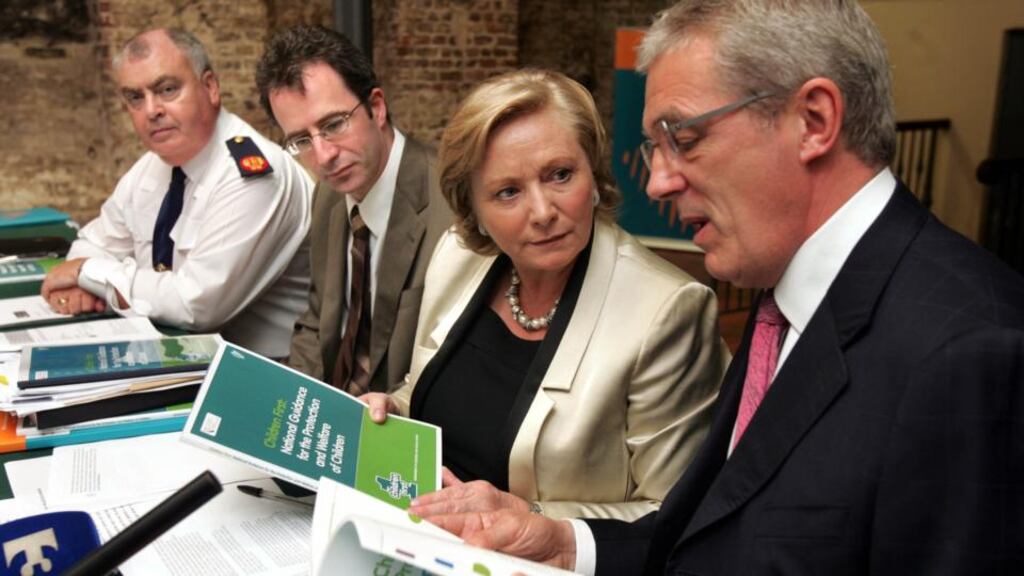The opaqueness of childcare proceedings in the District Court which are bound, with very few exceptions, by the in camera rule has elicited a lot of public anxiety. This has been amplified following the recent case involving Roma children and has evolved in a context where confidence in the childcare system has been low and media coverage is usually limited to perceived failure. The Child Care Law Reporting Project , which permits selected reporters to observe hearings and publish anonymised reports at childlawproject.ie, serves a dual purpose. First, it lifts the murkiness from the proceedings, revealing the relatively mundane muddle of court business. Second, it illustrates the diversity of cases and the variety of perspectives presented to the courts which go some way to explaining why outcomes can be variable.
The chief executive of the new Child and Family Agency, Gordon Jeyes, recently described child protection services in Ireland as "highly regulated". He was correct in his perception of the official legal and policy framework, but a glimpse into the court room shows the actuality of work in this area is quite messy, subject to all sorts of vagaries and scarcely amenable to the technical and linear solutions that appear so simple to apply. Despite the pro-active and welfarist orientation of the Child Care Act 1991, it is difficult to prevent an element of adversity from dominating legal proceedings. None of the stakeholders involved, including judges, legal teams, families or witnesses, are passive recipients of the applications made by the Health Service Executive and all sorts of themes are played out in the court room. These include long deliberations about thresholds for acceptable parenting, assertion of rights, conflicting claims, second chances, adjournments, demands and occasional threats. Such debates reflect the fundamental concerns associated with separating children from their parents in a liberal democracy where certainty about what is in a child's best interests is difficult to ascertain.
Inadequate statistics
The project provides useful enlightenment on other areas. Statistical childcare data provided annually by the HSE has been notoriously inadequate to date. There has been almost no indepth analysis of the causes and circumstances that lie beneath the figures, or of their implications for health and social services. It is never clear why the number of confirmed cases is so low in relation to the numbers of reports received. Although the sample of cases reported by the Child Care Law Reporting Project is relatively small, even after a year it has been able to identify certain trends. The reports show that the high level of evidential certainty required has a limiting effect on the protective action that can be taken by the authorities. It is generally understood the majority of children separated from their parents come from disadvantaged backgrounds but it may not have been formerly recognised that foreign-national children, particularly from Africa, are disproportionately represented in this cohort, or that the most frequently cited reason for care applications is parental mental health and disability. Almost all the children concerned had difficulties with school. This information implies the necessity for a broad-based, multiservice response from adult and children's health and social services as well as education.
The Child Care Law Reporting Project has elucidated another anomalous aspect of the court system: the role of the guardian ad litem. Guardians are there to fulfil the essential function of independently representing the child’s rights and interests. As the case reports illustrate, many of them are successful in eliciting or expediting services for children that may not otherwise have been forthcoming. However, given the extraordinary level of authority they appear to carry, their provenance raises a number of questions. In Ireland, guardians ad litem are unregulated, unregistered and do not represent a system as such, but rather a number of individuals, either under the banner of or associated with, private or not for profit organisations. The fact they are unfettered by economic constraints in the sometimes very costly recommendations that they make gives them a degree of liberty unavailable to other participants in the cases, yet there is no external mechanism for assuring the quality of their work. The Minister for Children has signalled her intention to address the guardian ad litem issue, a move that would be welcomed by many of the guardians.
Social worker myths
The Child Care Law Reporting Project should, over time, serve the function of educating the public about the role of child-protection social workers. Research in Ireland has shown that many communities, particularly those in disadvantaged areas, carry a misperception about the power of social workers to remove children almost at will. The case examples provided by the project paradoxically illustrate the relative powerlessness of practitioners in the face of the court, and the apparent level of democracy employed should provide some assurance. In over one-third of the cases reported by the project, care orders were granted with the consent of parents who acknowledged that they were not capable of meeting their children's needs. This fact illustrates the ideal of partnership and participation underpinning legislation and policy is often attained, despite perceptions.
As the project progresses and data are aggregated, it will be possible for it to provide an even more composite picture of childcare proceedings. The ethical standards and the rigorous research methodology should ensure it continues to make a constructive contribution to the knowledge base.
Helen Buckley is an associate professor in the school of social work and social policy at Trinity College Dublin. She sits on the oversight board of the Child Care Law Reporting Project








